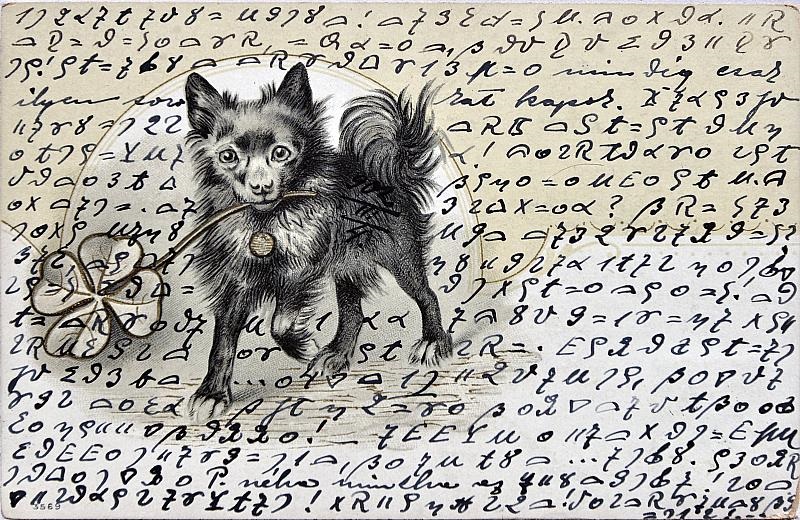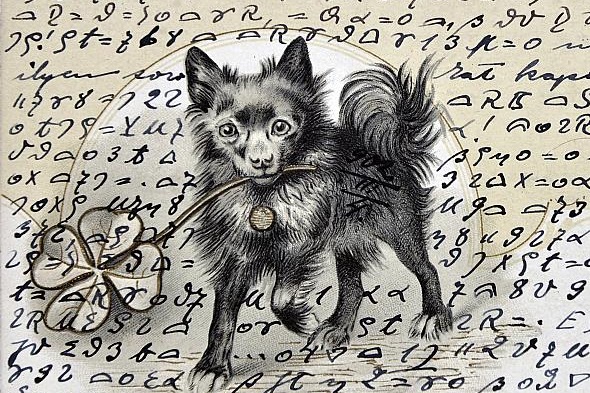Postcard enthusiast Günther Hunger from Oschatz has provided me a scan of an encrypted message from the early 20th century. Can a reader decipher it?
The postcard from Homberg (Ohm), Germany I introduced on Friday was, once again, solved by my readers within hours. Thanks to Thomas and Gerry for doing a great job.
On the same day, I recieved another query concerning an encrypted postcard. It came from Günther Hunger, a deltiologist (i.e., a postcard collector and scholar) from Oschatz in eastern Germany. Günther had already contacted me six years ago, when he had come across an encrypted postcard from Saxony. I blogged about it, and my readers Delia Huegel (Romania) and Armin Krauß (Germany) deciphered it.
Here’s the card Günther Hunger would like to have deciphered this time: 
To my regret, the address side of the card is not available. So, we neither know the date of the stamp nor the recipient. If I’m not wrong, the date 1902-11-4 can be read on the dog.
As can be seen, the message includes a few passages that appear to be written in plaintext. I consulted my preferred expert for old writing (my father), but he couldn’t tell me what these unencrypted words mean. As it seems, they are neither German nor English nor French.
When I typed in a few of the cleartext words on Google, I found out that “ilyen” and “kapok” make sense in Hungarian. I suppose that this is the language the card is written in.
Can a reader find out more?
Follow @KlausSchmeh
Further reading: Two unsolved encrypted postcards from London and Chicago
Linkedin: https://www.linkedin.com/groups/13501820
Facebook: https://www.facebook.com/groups/763282653806483/



Kommentare (12)